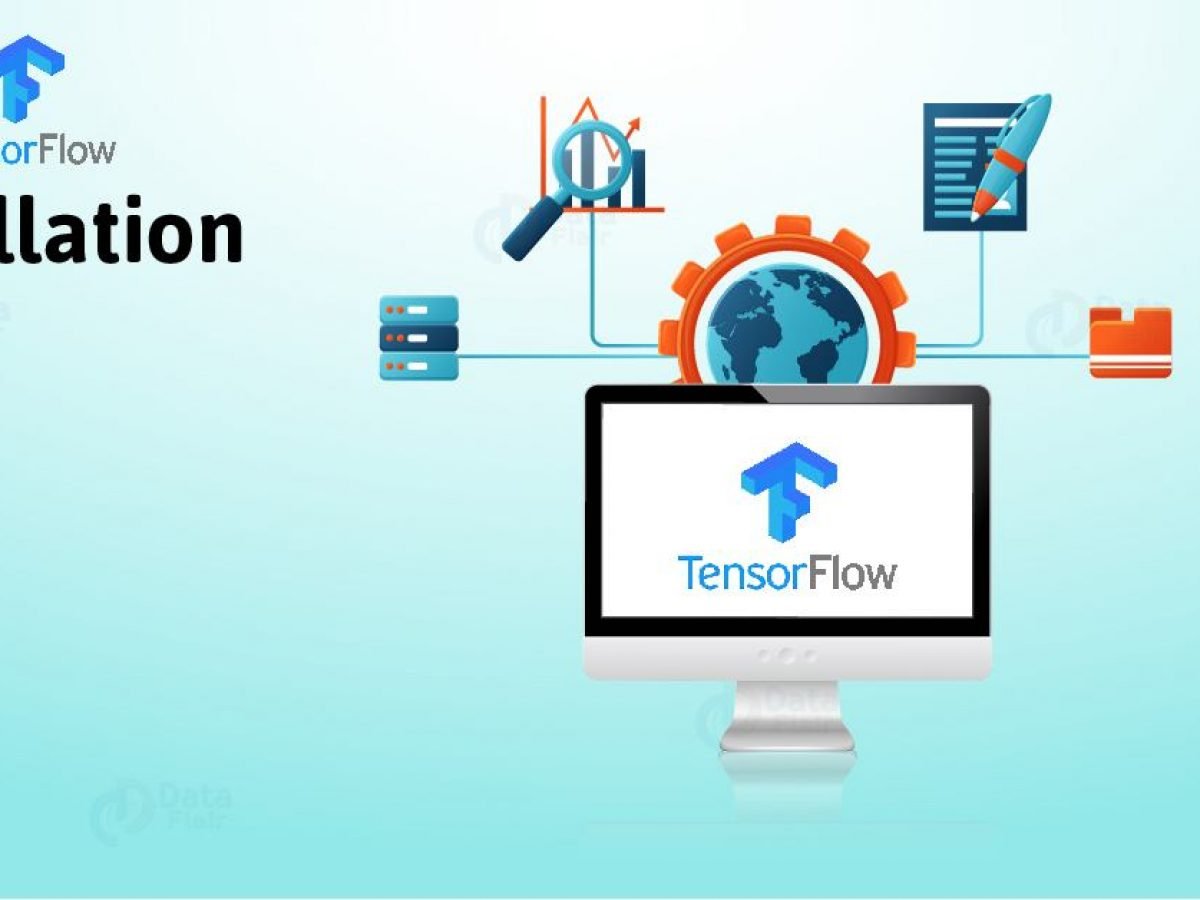Tensorflow seems to need special versions of tools and libs. Pip only takes care of python version. To handle this in a professional way (means it save tremendos time for me and others) you have to set a special environment for each software like this. This installation is compatible with Linux/Mac OS X, and Python 2.7 and 3.4+. So you need to install Tensorflow separately if you haven't already done so. Note: The following steps will be completed in either a Windows command prompt or Unix terminal (Linux/Mac). Use the tabs at the top of each code section to switch to commands relevant to your operating system. Check for conda install. If conda is already installed on your system, skip to the Install API section. If you are unsure whether conda. TensorBoard is a suite of web applications for inspecting and understanding your TensorFlow runs and graphs. This README gives an overview of key concepts in TensorBoard, as well as how to interpret the visualizations TensorBoard provides.
TensorFlow 2 packages are available
tensorflow—Latest stable release with CPU and GPU support(Ubuntu and Windows)tf-nightly—Preview build (unstable). Ubuntu and Windows include GPU support.
Older versions of TensorFlow
For TensorFlow 1.x, CPU and GPU packages are separate:

tensorflow1.15—Release for CPU-onlytensorflow-gpu1.15—Release with GPU support(Ubuntu and Windows)
System requirements
- Python 3.6–3.8
- Python 3.8 support requires TensorFlow 2.2 or later.
- pip 19.0 or later (requires
manylinux2010support) - Ubuntu 16.04 or later (64-bit)
- macOS 10.12.6 (Sierra) or later (64-bit) (no GPU support)
- Windows 7 or later (64-bit)
- Raspbian 9.0 or later
- GPU support requires a CUDA®-enabled card (Ubuntu and Windows)
pip.Hardware requirements
- Starting with TensorFlow 1.6, binaries use AVX instructions which may not run on older CPUs.
- Read the GPU support guide to set up a CUDA®-enabled GPU card on Ubuntu or Windows.
1. Install the Python development environment on your system
Check if your Python environment is already configured:
Requires Python 3.6–3.8, pip and venv >= 19.0 If these packages are already installed, skip to the next step.
Otherwise, install Python, the pip package manager, and venv:
Ubuntu
macOS
Install using the Homebrew package manager:
Windows
Install the Microsoft Visual C++ Redistributable for Visual Studio 2015, 2017, and 2019. Starting with the TensorFlow 2.1.0 version, the msvcp140_1.dll file is required from this package (which may not be provided from older redistributable packages). The redistributable comes with Visual Studio 2019 but can be installed separately:
- Go to the Microsoft Visual C++ downloads,
- Scroll down the page to the Visual Studio 2015, 2017 and 2019 section.
- Download and install the Microsoft Visual C++ Redistributable for Visual Studio 2015, 2017 and 2019 for your platform.
Make sure long paths are enabled on Windows.
Install the 64-bitPython 3 release for Windows (select pip as an optional feature).
Raspberry Pi
Requirements for the Raspbian operating system:
Other
If not in a virtual environment, use
python3 -m pip for the commands below. This ensures that you upgrade and use the Python pip instead of the system pip.2. Create a virtual environment (recommended)
Python virtual environments are used to isolate package installation from the system.
Ubuntu / macOS
Create a new virtual environment by choosing a Python interpreter and making a ./venv directory to hold it:
Activate the virtual environment using a shell-specific command:
When the virtual environment is active, your shell prompt is prefixed with (venv).
Install packages within a virtual environment without affecting the host system setup. Start by upgrading pip:
And to exit the virtual environment later:
Windows
Create a new virtual environment by choosing a Python interpreter and making a .venv directory to hold it:
Activate the virtual environment:
Install packages within a virtual environment without affecting the host system setup. Start by upgrading pip:
And to exit the virtual environment later:

Conda
While the TensorFlow provided pip package is recommended, acommunity-supportedAnaconda packageis available. To install, read the Anaconda TensorFlow guide.
3. Install the TensorFlow pip package
Choose one of the following TensorFlow packages to install from PyPI:
tensorflow—Latest stable release with CPU and GPU support(Ubuntu and Windows).tf-nightly—Preview build (unstable). Ubuntu and Windows include GPU support.tensorflow1.15—The final version of TensorFlow 1.x.
setup.py file under REQUIRED_PACKAGES .
.Virtual environment install
Verify the install:
System install
Verify the install:
Success:Install Tensorflow On Mac
If a tensor is returned, you've installed TensorFlow successfully. Read the tutorials to get started.Package location
A few installation mechanisms require the URL of the TensorFlow Python package. The value you specify depends on your Python version.
Install Tensorflow 2.0 On Mac
| Version | URL |
|---|---|
| Linux | |
| Python 3.6 GPU support | https://storage.googleapis.com/tensorflow/linux/gpu/tensorflow_gpu-2.4.0-cp36-cp36m-manylinux2010_x86_64.whl |
| Python 3.6 CPU-only | https://storage.googleapis.com/tensorflow/linux/cpu/tensorflow_cpu-2.4.0-cp36-cp36m-manylinux2010_x86_64.whl |
| Python 3.7 GPU support | https://storage.googleapis.com/tensorflow/linux/gpu/tensorflow_gpu-2.4.0-cp37-cp37m-manylinux2010_x86_64.whl |
| Python 3.7 CPU-only | https://storage.googleapis.com/tensorflow/linux/cpu/tensorflow_cpu-2.4.0-cp37-cp37m-manylinux2010_x86_64.whl |
| Python 3.8 GPU support | https://storage.googleapis.com/tensorflow/linux/gpu/tensorflow_gpu-2.4.0-cp38-cp38-manylinux2010_x86_64.whl |
| Python 3.8 CPU-only | https://storage.googleapis.com/tensorflow/linux/cpu/tensorflow_cpu-2.4.0-cp38-cp38-manylinux2010_x86_64.whl |
| macOS (CPU-only) | |
| Python 3.6 | https://storage.googleapis.com/tensorflow/mac/cpu/tensorflow-2.4.0-cp36-cp36m-macosx_10_9_x86_64.whl |
| Python 3.7 | https://storage.googleapis.com/tensorflow/mac/cpu/tensorflow-2.4.0-cp37-cp37m-macosx_10_9_x86_64.whl |
| Python 3.8 | https://storage.googleapis.com/tensorflow/mac/cpu/tensorflow-2.4.0-cp38-cp38-macosx_10_14_x86_64.whl |
| Windows | |
| Python 3.6 GPU support | https://storage.googleapis.com/tensorflow/windows/gpu/tensorflow_gpu-2.4.0-cp36-cp36m-win_amd64.whl |
| Python 3.6 CPU-only | https://storage.googleapis.com/tensorflow/windows/cpu/tensorflow_cpu-2.4.0-cp36-cp36m-win_amd64.whl |
| Python 3.7 GPU support | https://storage.googleapis.com/tensorflow/windows/gpu/tensorflow_gpu-2.4.0-cp37-cp37m-win_amd64.whl |
| Python 3.7 CPU-only | https://storage.googleapis.com/tensorflow/windows/cpu/tensorflow_cpu-2.4.0-cp37-cp37m-win_amd64.whl |
| Python 3.8 GPU support | https://storage.googleapis.com/tensorflow/windows/gpu/tensorflow_gpu-2.4.0-cp38-cp38-win_amd64.whl |
| Python 3.8 CPU-only | https://storage.googleapis.com/tensorflow/windows/cpu/tensorflow_cpu-2.4.0-cp38-cp38-win_amd64.whl |
| Raspberry PI (CPU-only) | |
| Python 3, Pi0 or Pi1 | https://storage.googleapis.com/tensorflow/raspberrypi/tensorflow-2.3.0rc2-cp35-none-linux_armv6l.whl |
| Python 3, Pi2 or Pi3 | https://storage.googleapis.com/tensorflow/raspberrypi/tensorflow-2.3.0rc2-cp35-none-linux_armv6l.whl |
